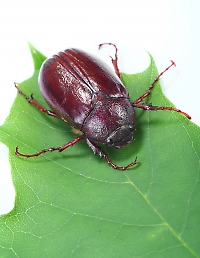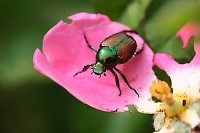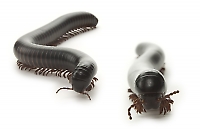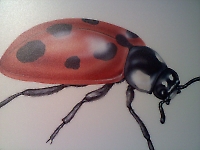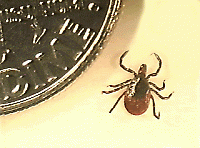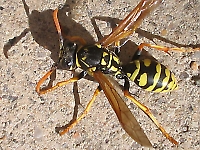Fire ants are a variety of stinging ants with over 280 species worldwide. They have several common names including ginger ants and tropical fire ants (English), aka-kami-ari (Japanese), fourmis de feu (French), Feuerameisen (German), and Langgam (Filipino).
A typical fire ant colony produces large mounds in open areas, and feeds mostly on young plants, seeds, and sometimes crickets. Fire ants often attack small animals and can kill them. Unlike many other ants, which bite and then spray acid on the wound, fire ants only bite to get a grip and then sting (from the abdomen) and inject a toxic alkaloid venom called Solenopsin, a compound from the class of piperidines. For humans, this is a painful sting, it hurts, a sensation similar to what one feels when burned by fire—hence the name fire ant—and the aftereffects of the sting can be deadly to sensitive individuals. The venom is both insecticidal and antibiotic. Researchers have proposed that nurse workers will spray their brood to protect them from microorganisms.
Fire ants nest in the soil, often near moist areas, such as river banks, pond edges, watered lawns and highway edges. Usually the nest will not be visible as it will be built under objects such as timber, logs, rocks, pavers, bricks, etc. If there is no cover for nesting, dome-shaped mounds will be constructed, but this is usually only found in open spaces such as fields, parks and lawns. These mounds can reach heights of 40 cm (15.7 in).
Colonies are founded by small groups of queens or single queens. Even if only one queen survives, within a month or so the colony can expand to thousands of individuals. Some colonies may be polygynous (having multiple queens per nest).


